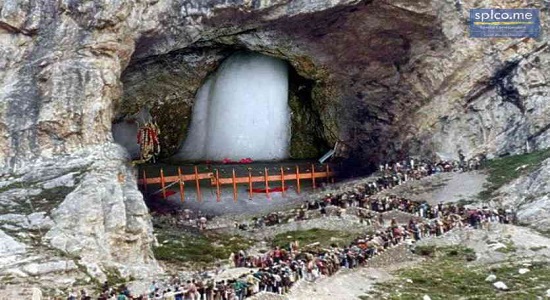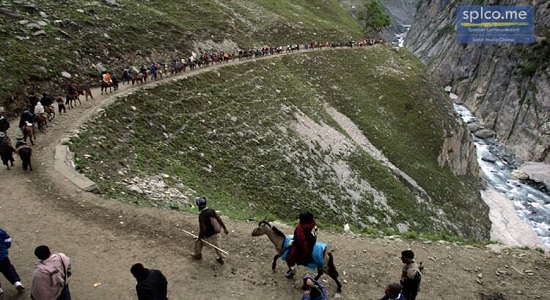The Supreme Court today set aside a National Green Tribunal order that had created a controversy by putting restrictions on devotees asking them to maintain silence while standing in front of the 'Maha Shivalinga', a natural formation inside the Amarnath cave in South Kashmir Himalayas.

The top court said that the December 14 last year's order should not have been passed by the NGT on a petition which did not concern the Amarnath cave shrine.
Observing that due procedure needed to be followed, a bench of Justices M B Lokur and Deepak Gupta asked petitioner Gauri Mulekhi to file an appropriate petition with regard to the pollution at the Amarnath cave.
The 'shivalinga' is a stalagmite formed by freezing of water drops falling from the roof of the cave and growing up vertically from the cave floor.
During the hearing, senior advocate Mukul Rohatgi, appearing for the Amarnath Shrine Board, said the tribunal had "jumped the gun" and imposed certain restrictions on chanting of religious hymns, carrying of devotional offerings (prasad) and use of mules to ferry devotees.
The bench asked an official of the Board why the devotees who cannot walk the distance to the cave, not be dropped by helicopters.
The official said about 1000 people could be dropped by helicopters at a distance of four kilometres from the cave, but they have to walk the remaining part.
Rohatgi said that every day over 15,000 people visited the cave and the NGT had erred in putting the restrictions on them. "You (devotees) can't carry prasad, you can't go in palanquin, you cannot have 'darshan' properly and you are to be frisked at such and such points. In other words, I may say the NGT jumped the gun in passing the order," he said.

The bench asked senior advocate Krishna Venugopal, appearing for petitioner Gauri Mulekhi, why a proper application cannot be moved on the issue. It observed that devotees can get 'prasad' at the cave instead of carrying all along to the shrine cave.
Venugopal said the NGT had not declared the entire area a silence zone and its only concern was the use of mules, due to which pollution was being caused in the area.
Rohatgi said the petition also did not specifically talk about pollution at Amarnath cave but about Vaishno Devi near Jammu also.
"There is a procedure which needs to be followed. You file a fresh specific petition with regard to Amarnath shrine," the bench said and set aside the order of green tribunal.
The green panel had on December 14 had clarified it had not imposed any restriction including the chanting of mantras and singing of bhajans inside the Amarnath cave shrine.
It had said it has neither intended, nor declared the entire area as a "silence zone".
It had said the only restriction imposed was that any devotee should maintain silence while standing in front of the 'shivalinga'.
Clarifying its earlier order that had evoked criticism from several right wing outfits, the NGT had said the restriction was not applicable to any other part including the main stairs leading to the holy cave.
It had said the direction was required to maintain the "sanctity and pristine condition" of the "holy cave"and also ensure that there is no adverse impact of noise, heat, vibration on the 'shivalinga'.
The Amarnath cave shrine is considered one of the major holy shrines by the Hindus. The cave itself is covered with snow most of the year barring a short period of time in summer when it is opened for pilgrims.














